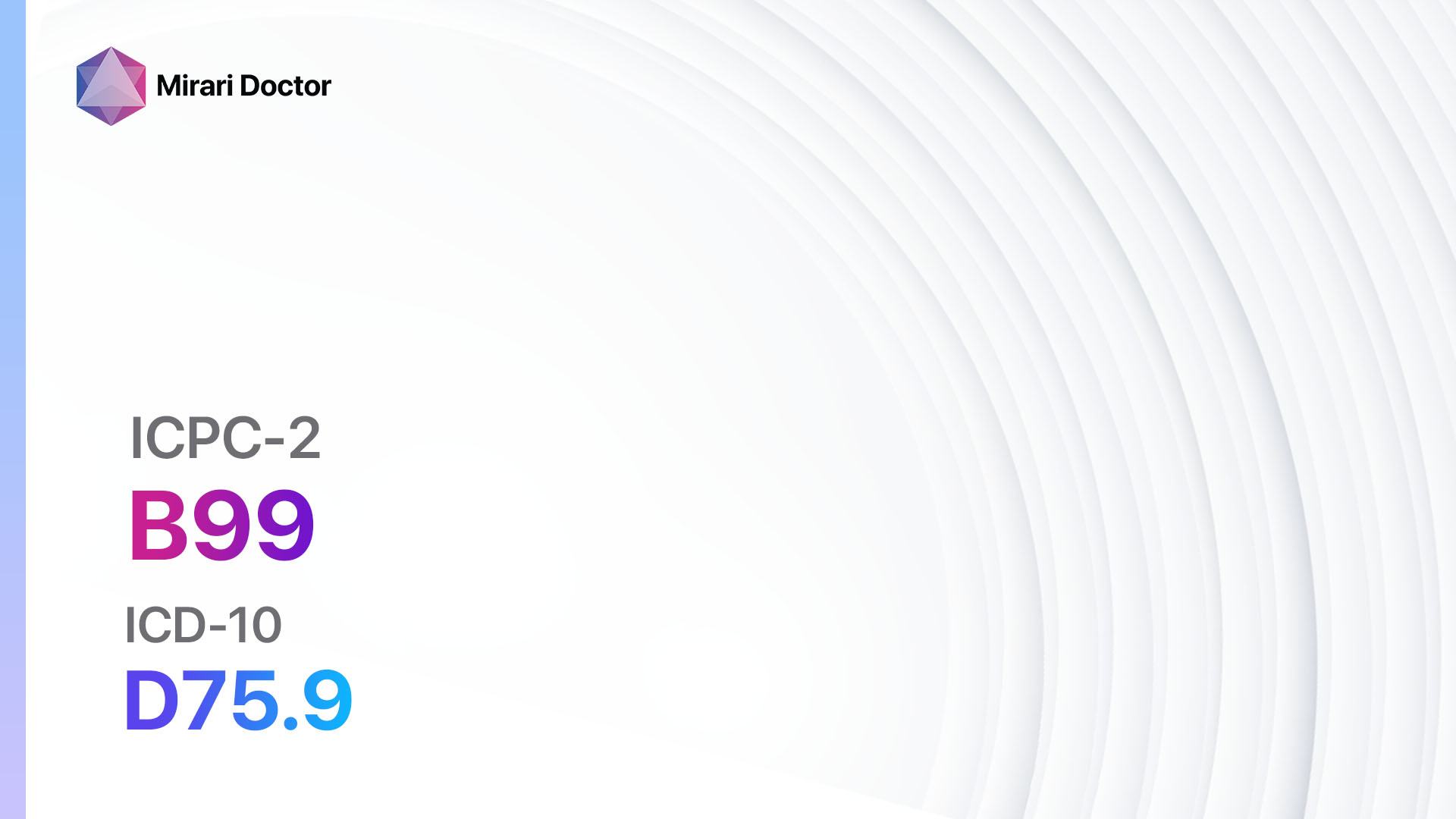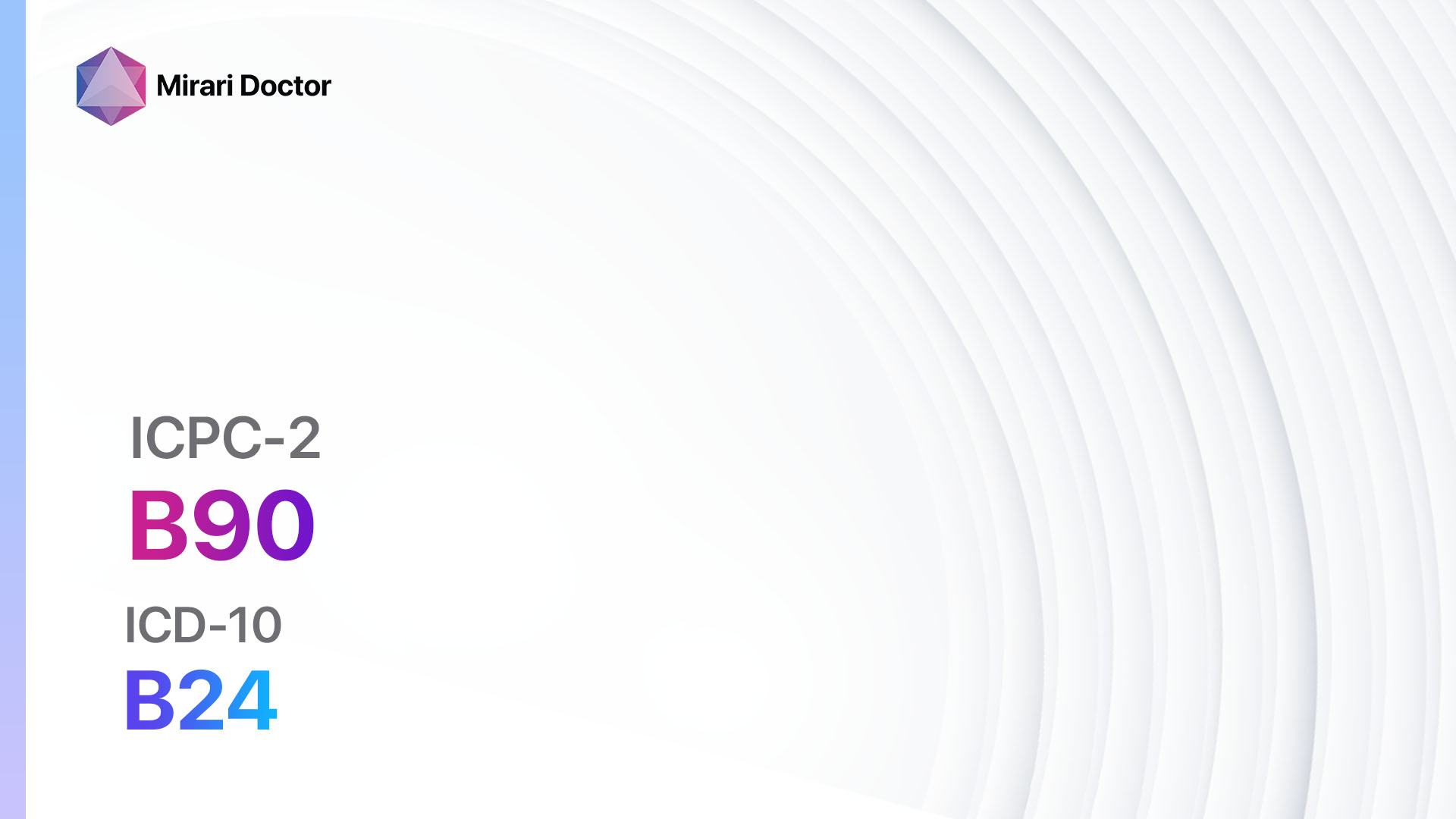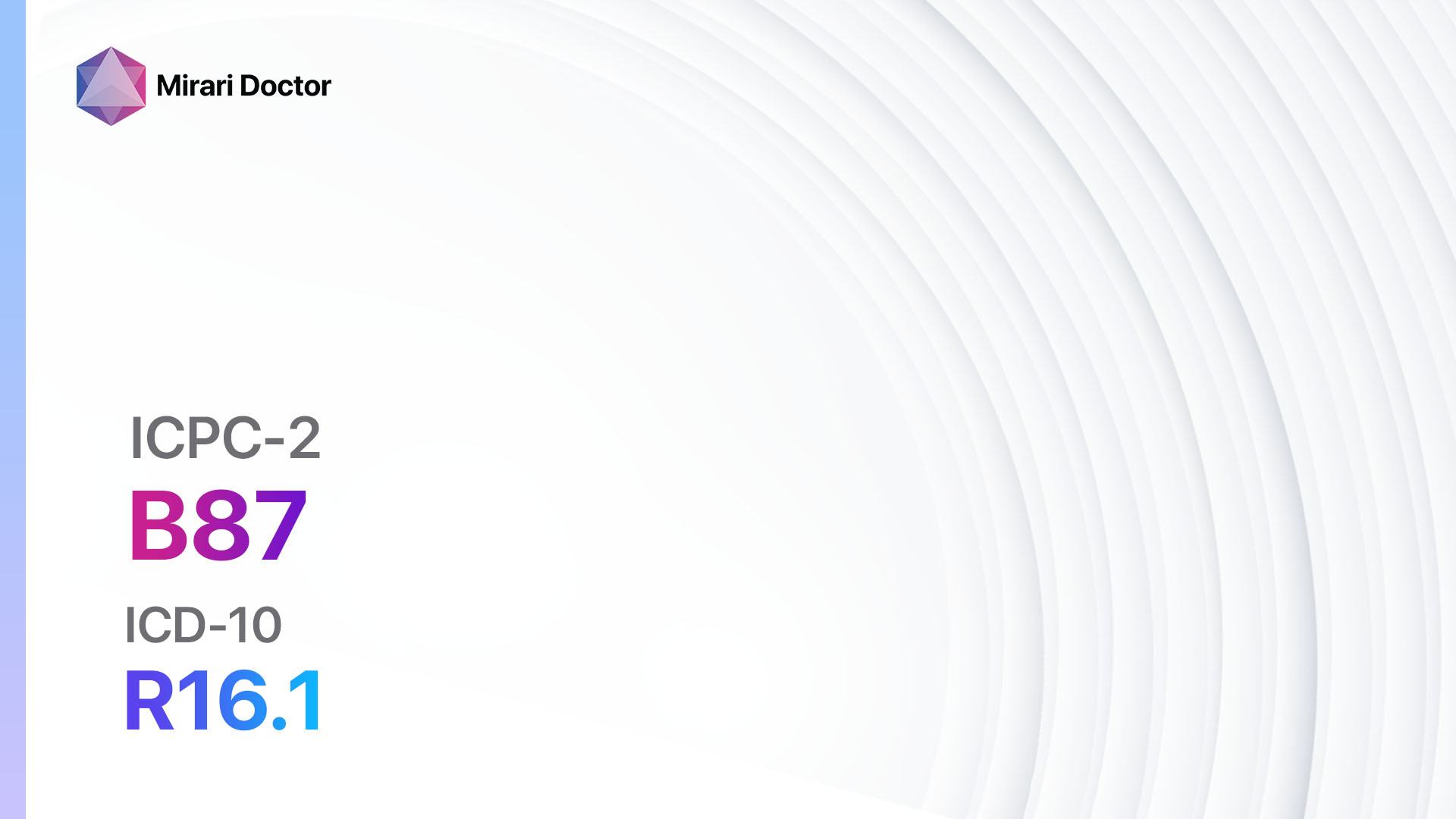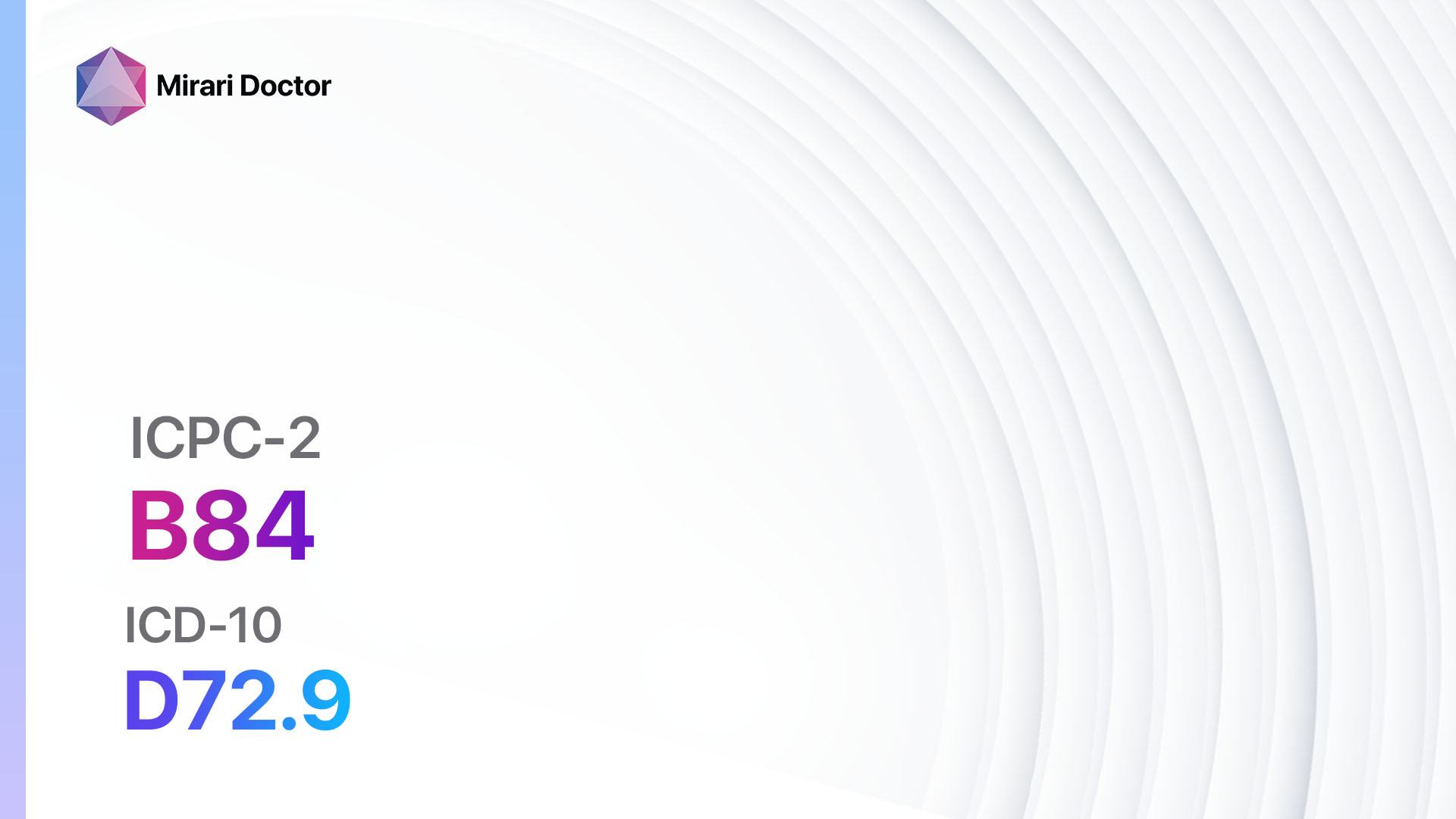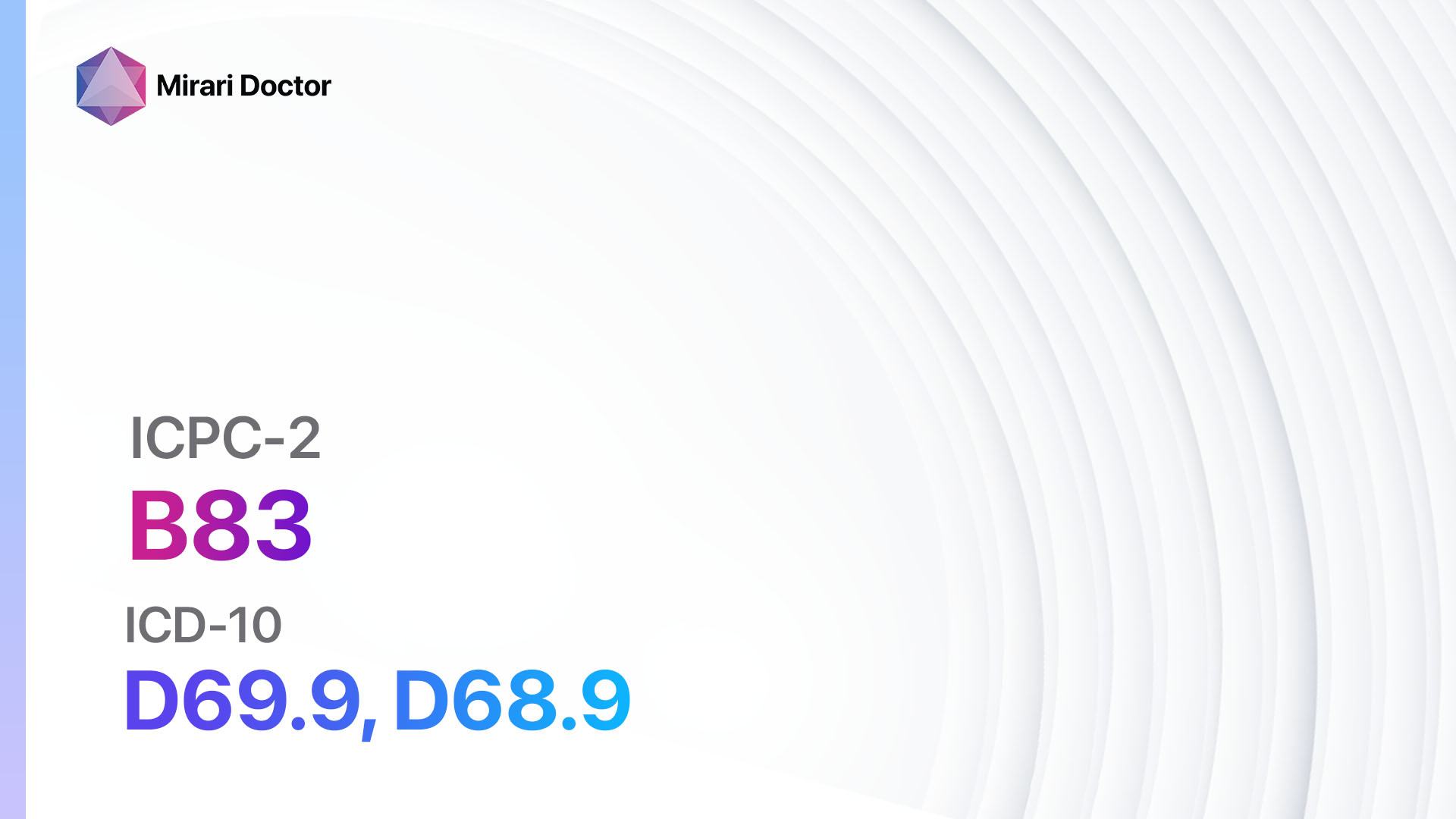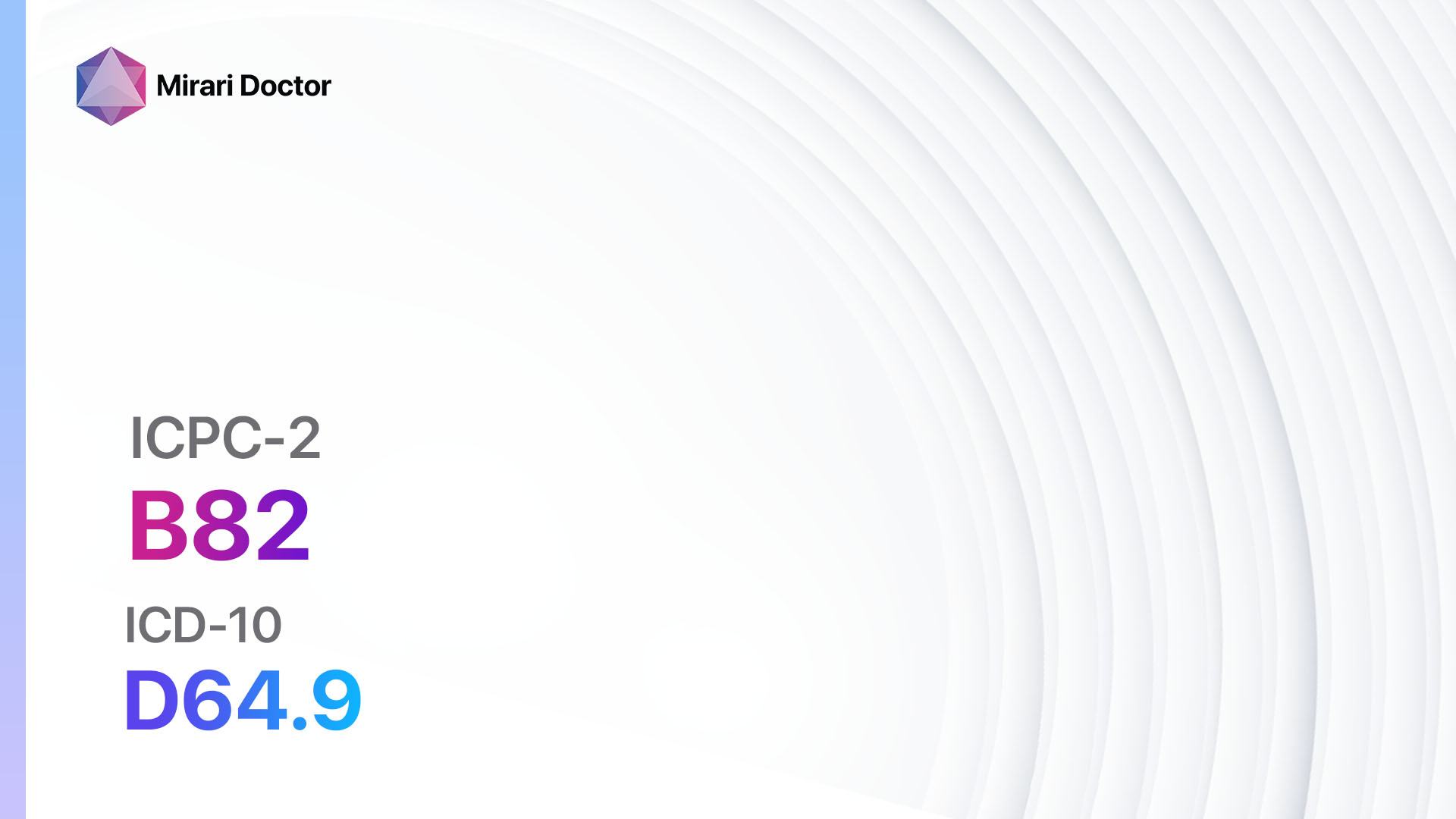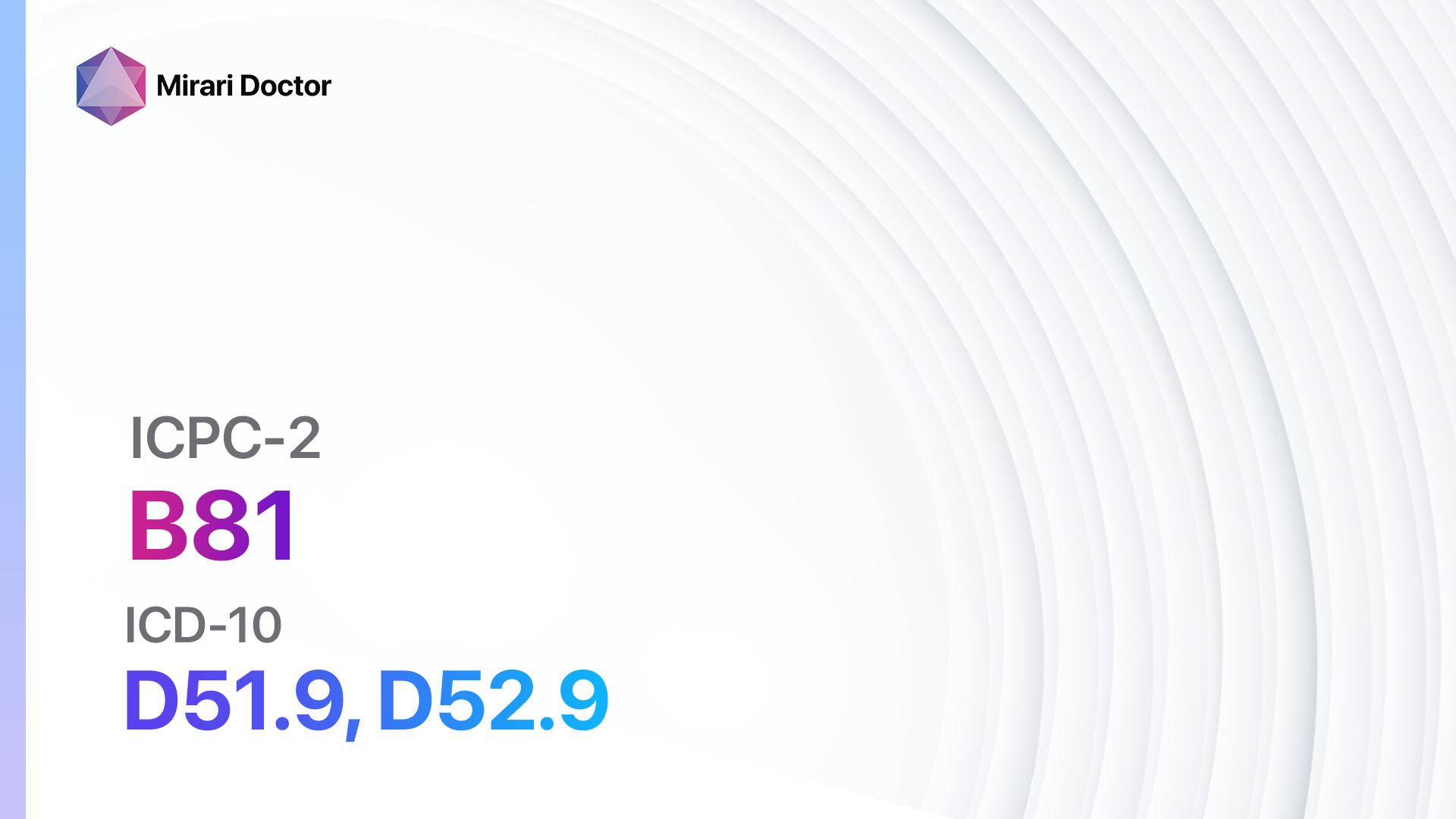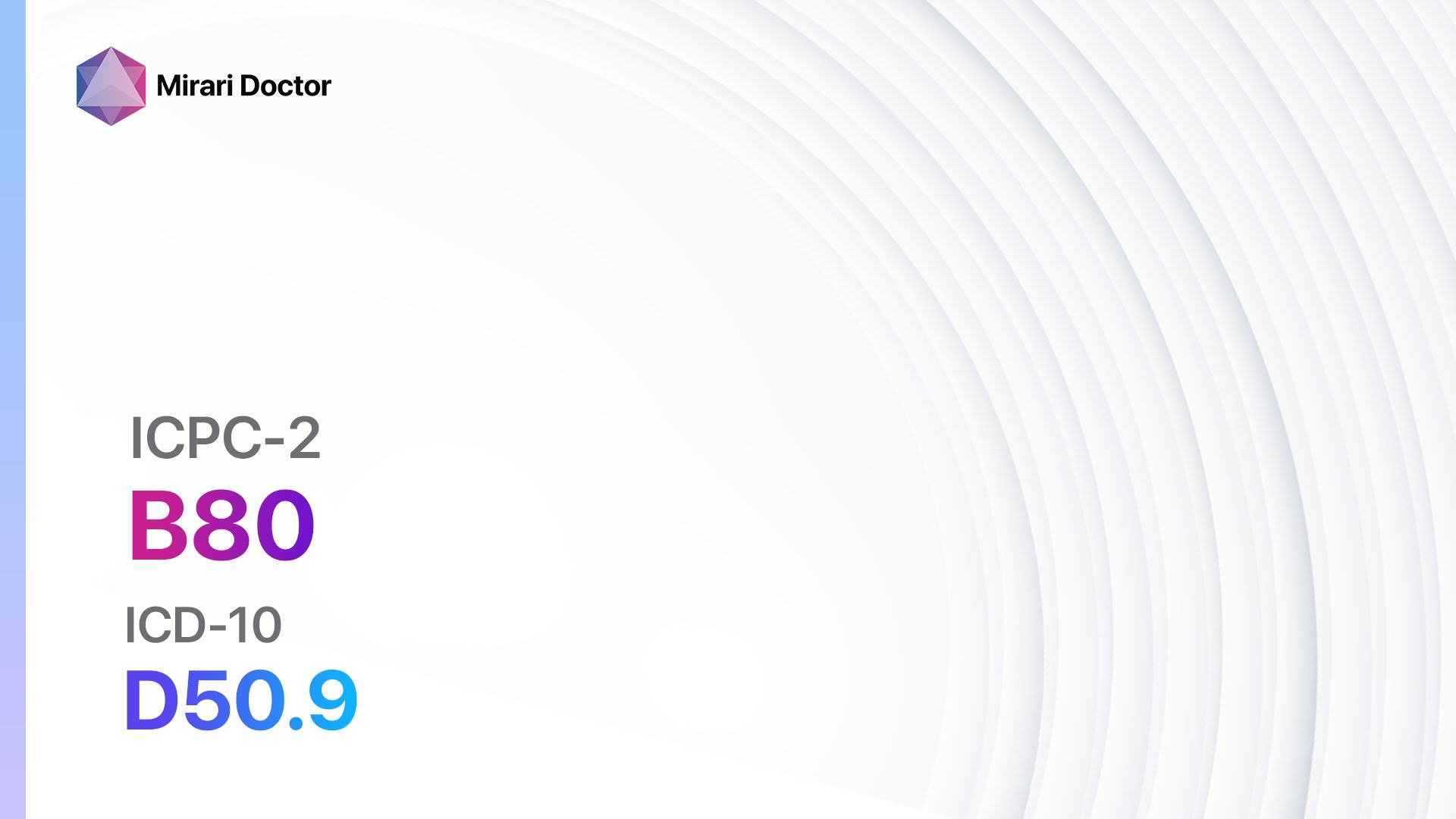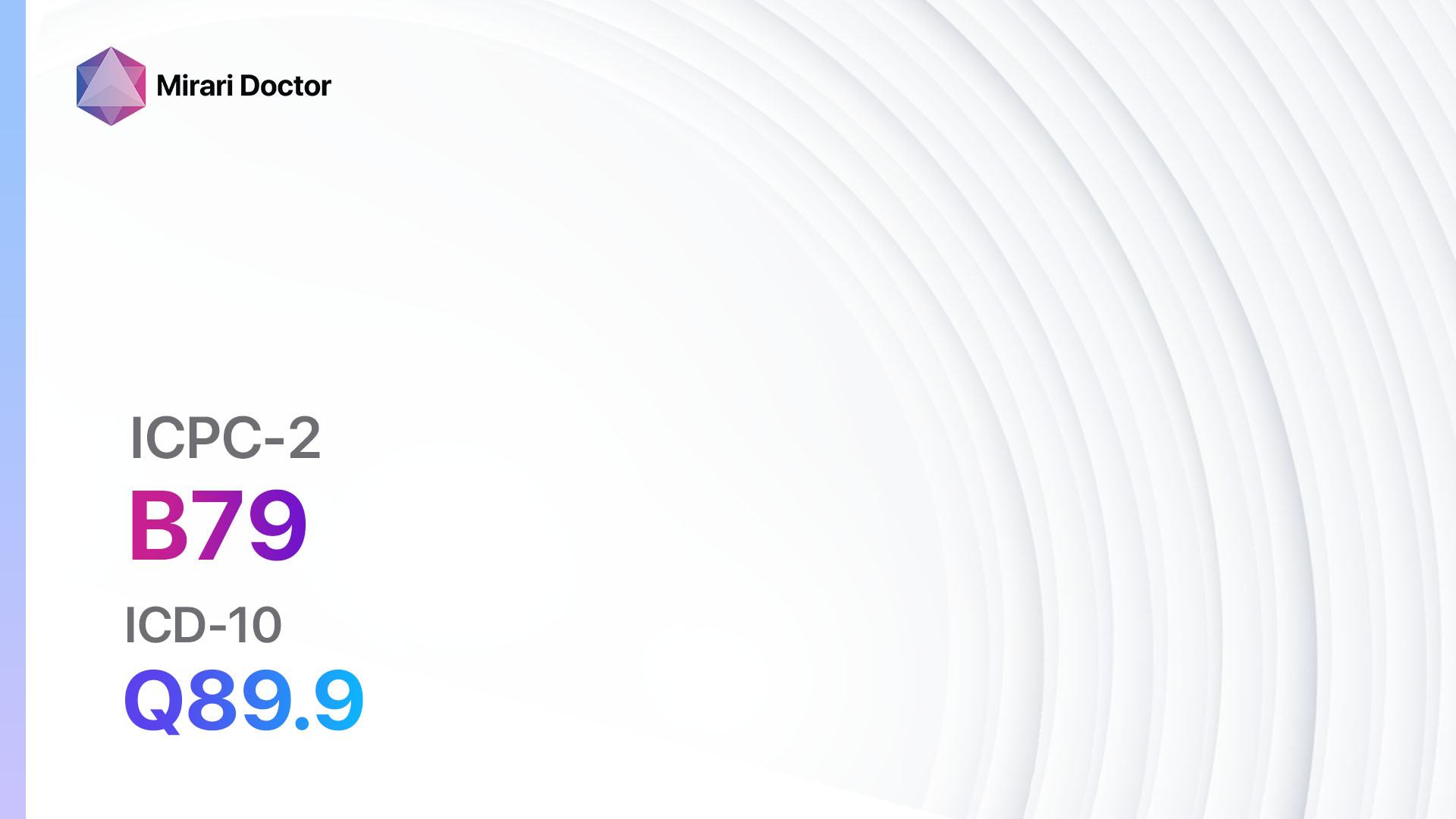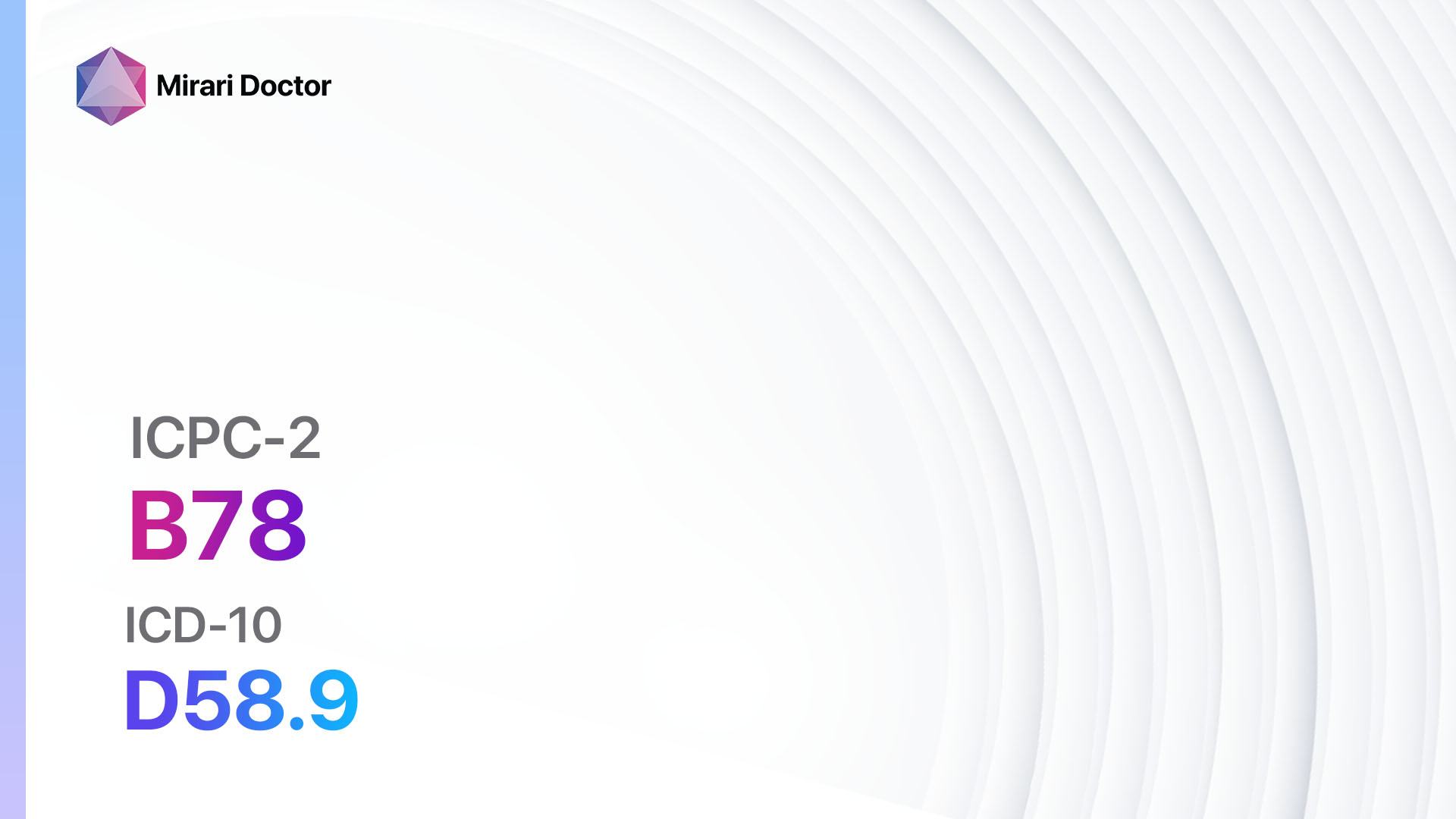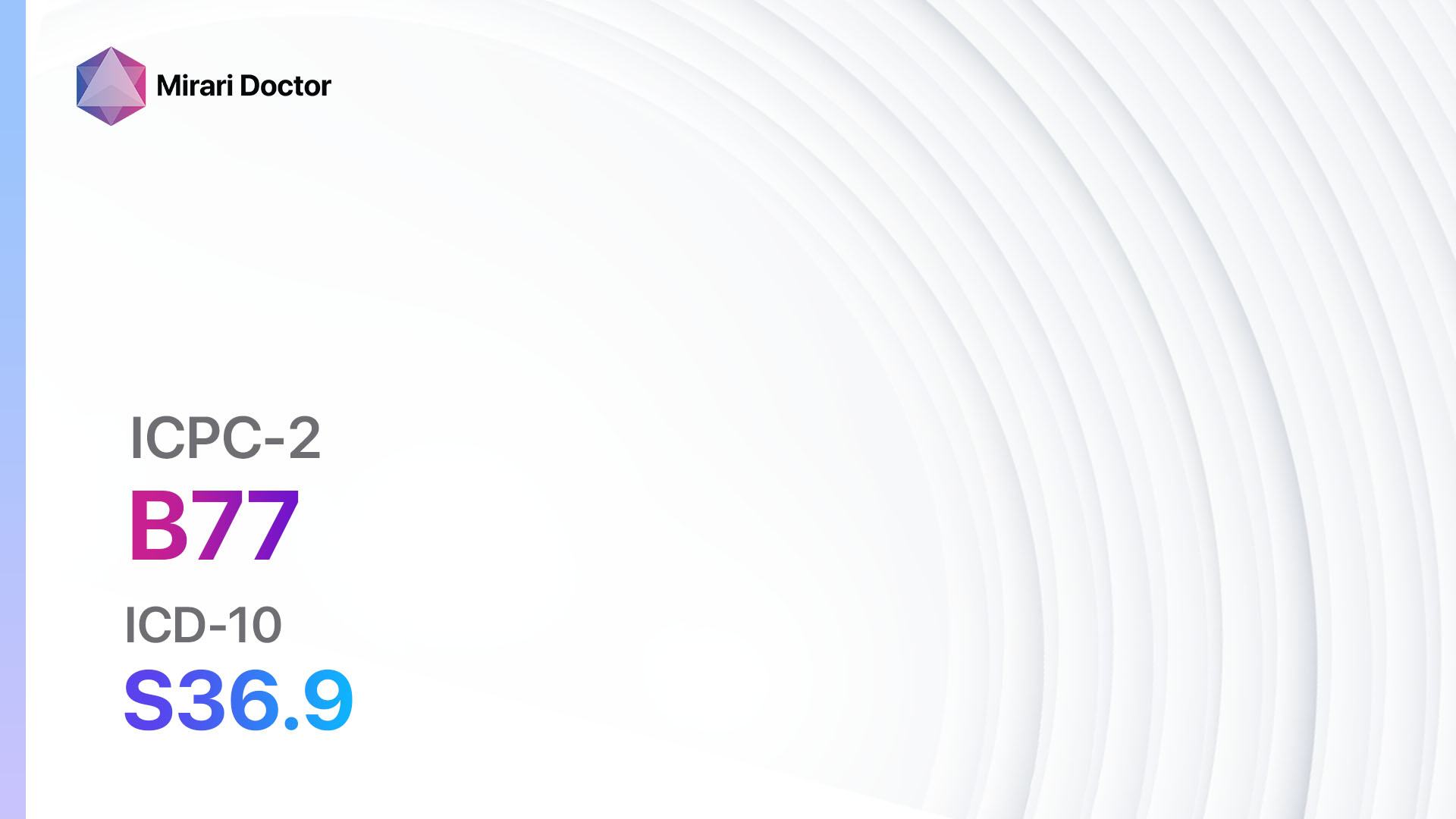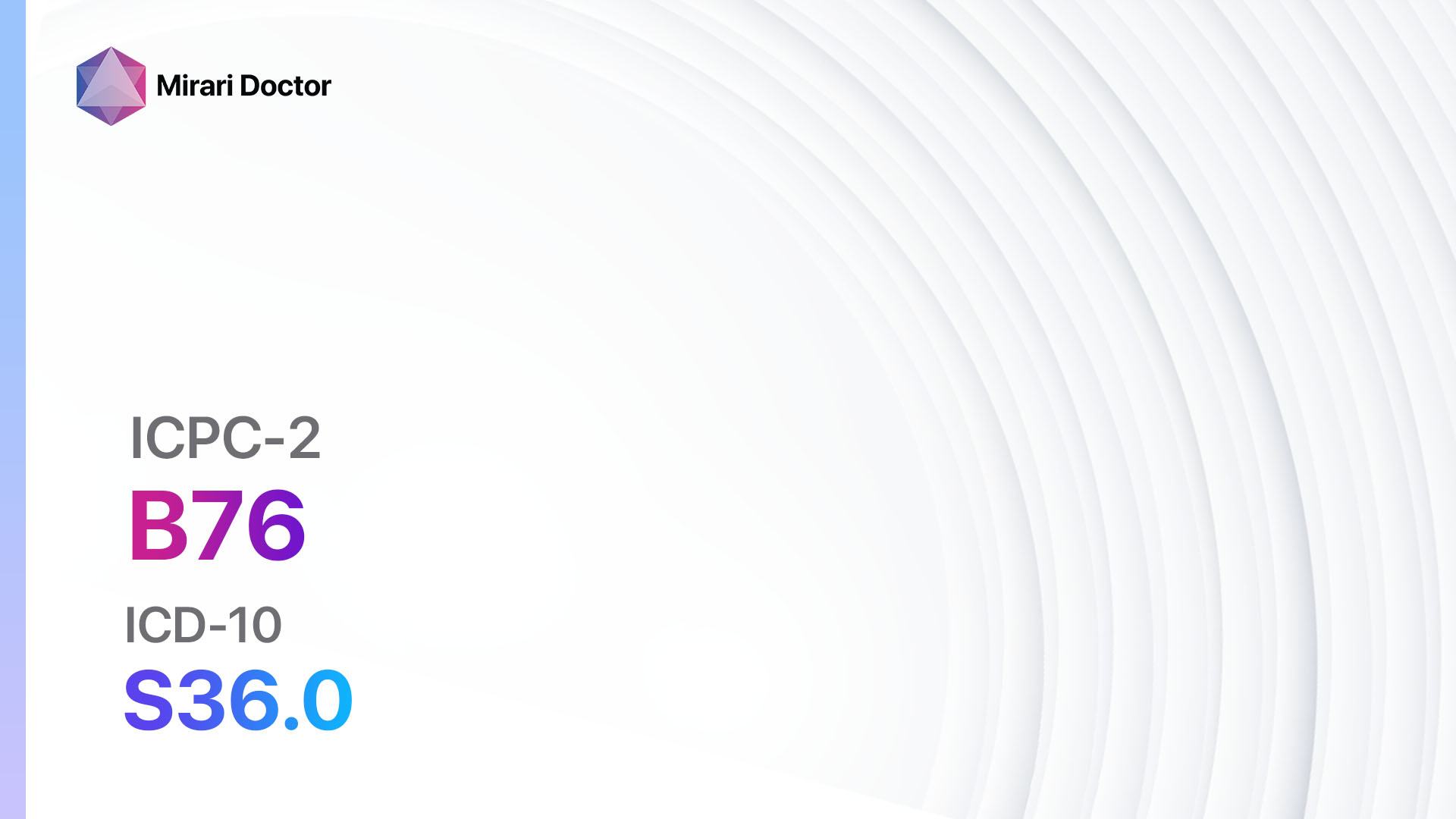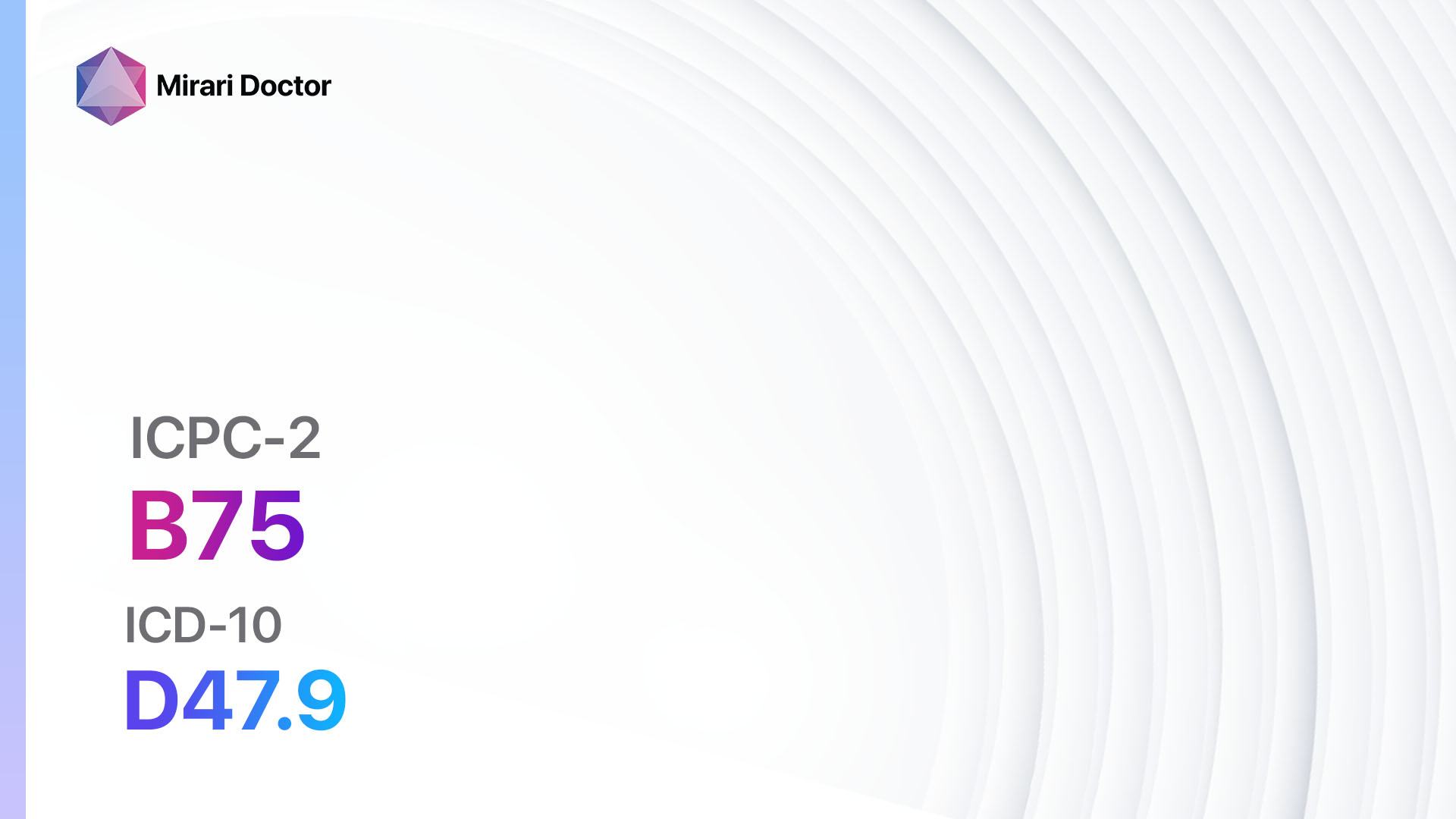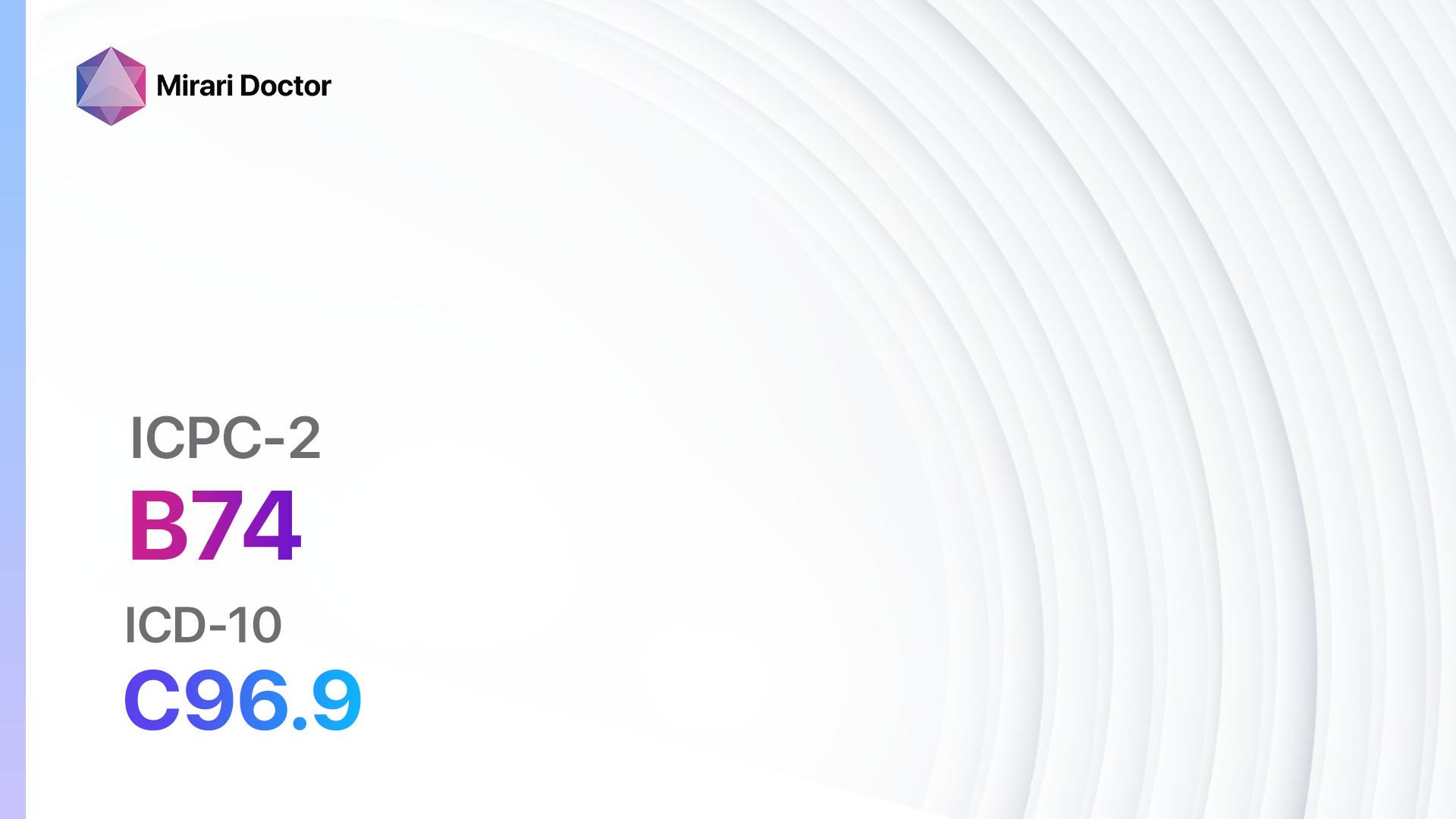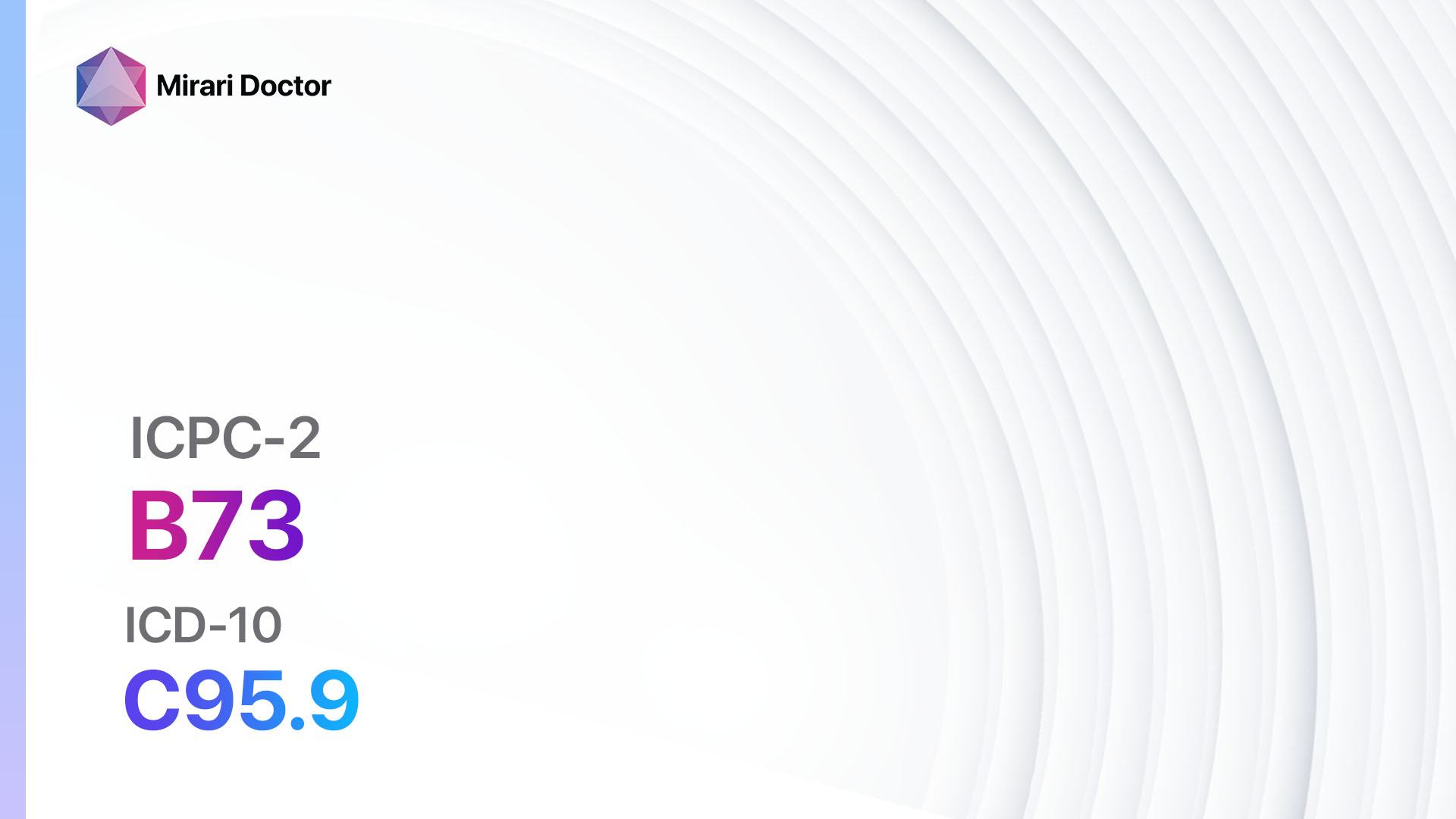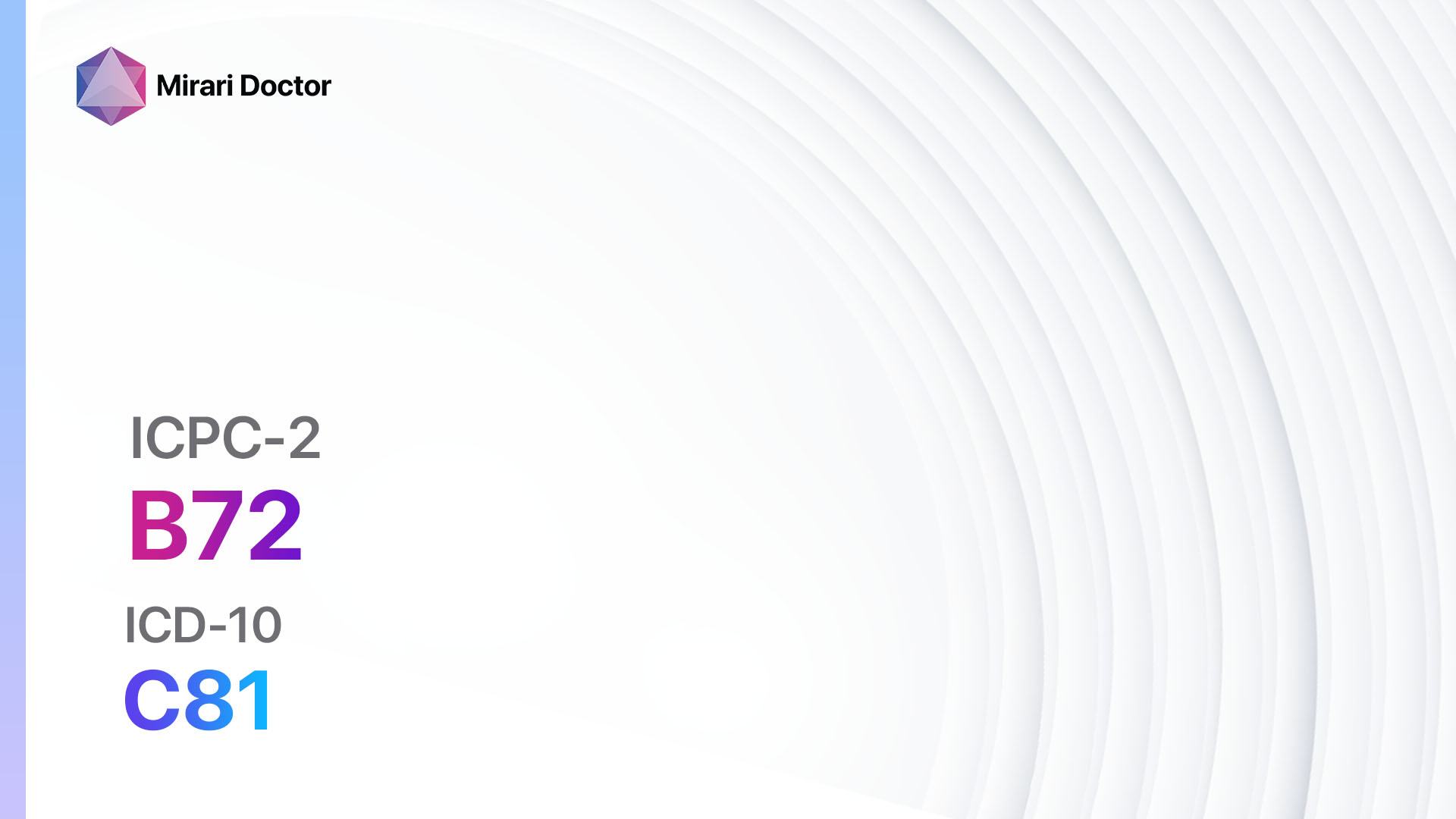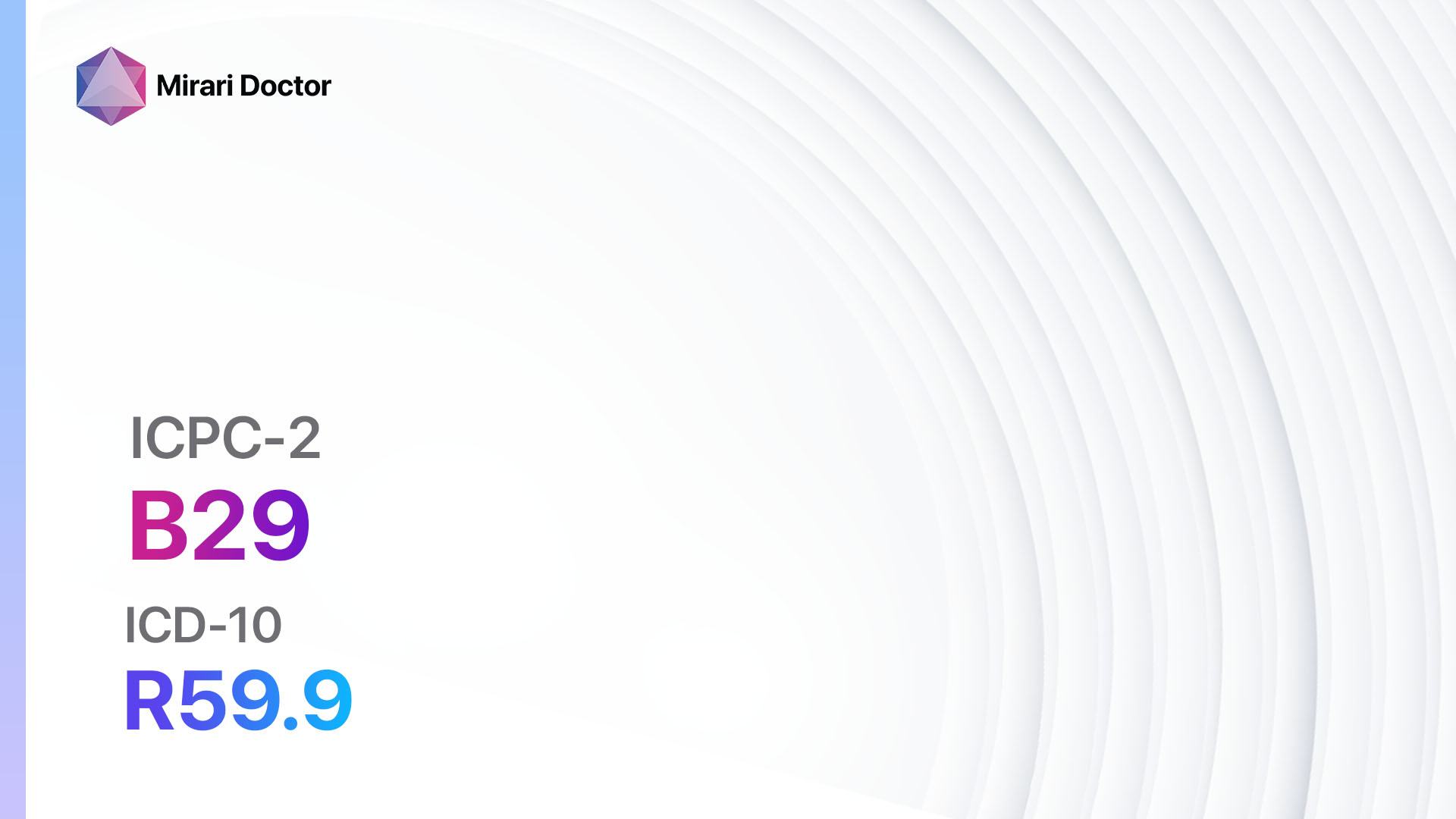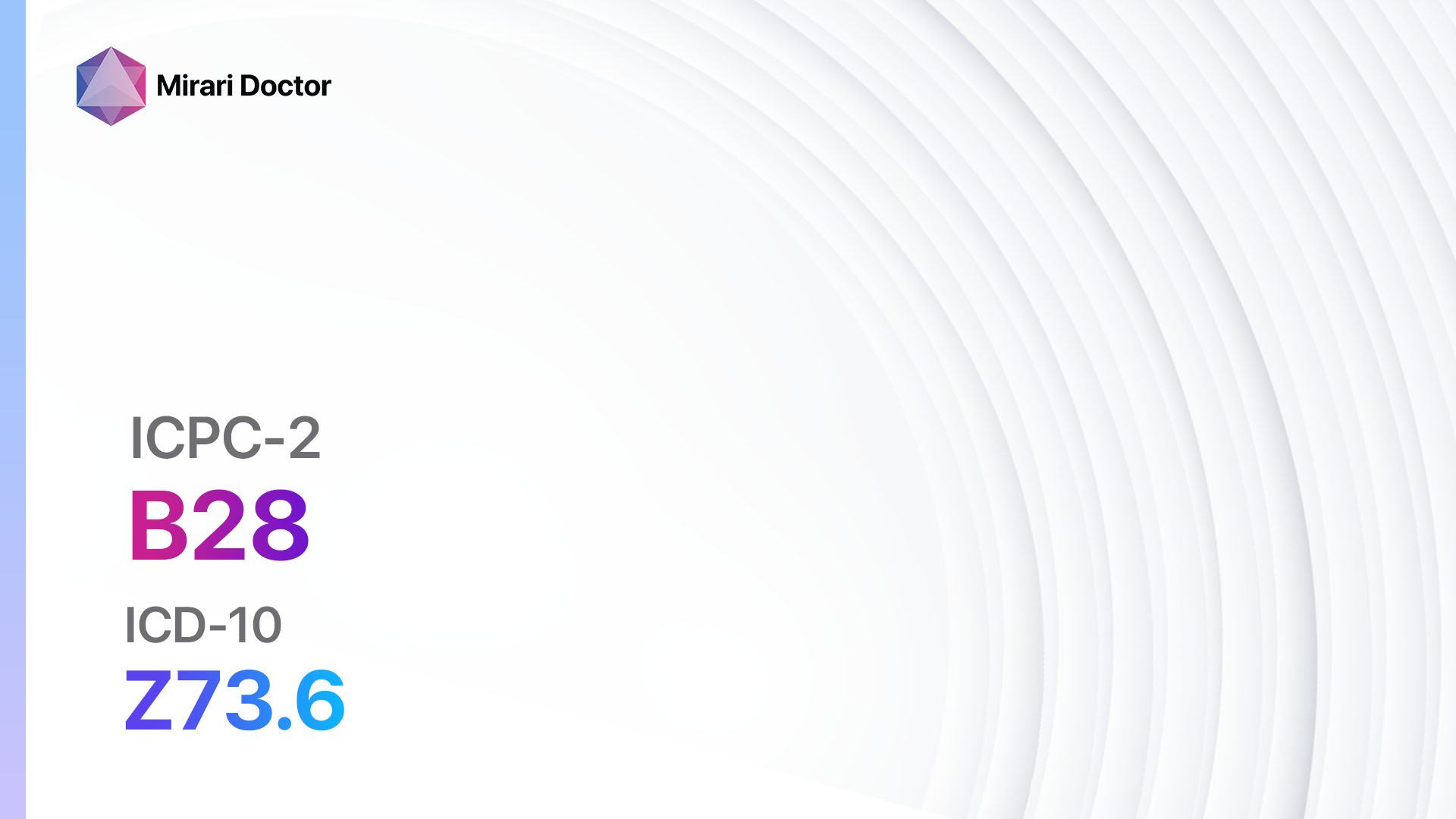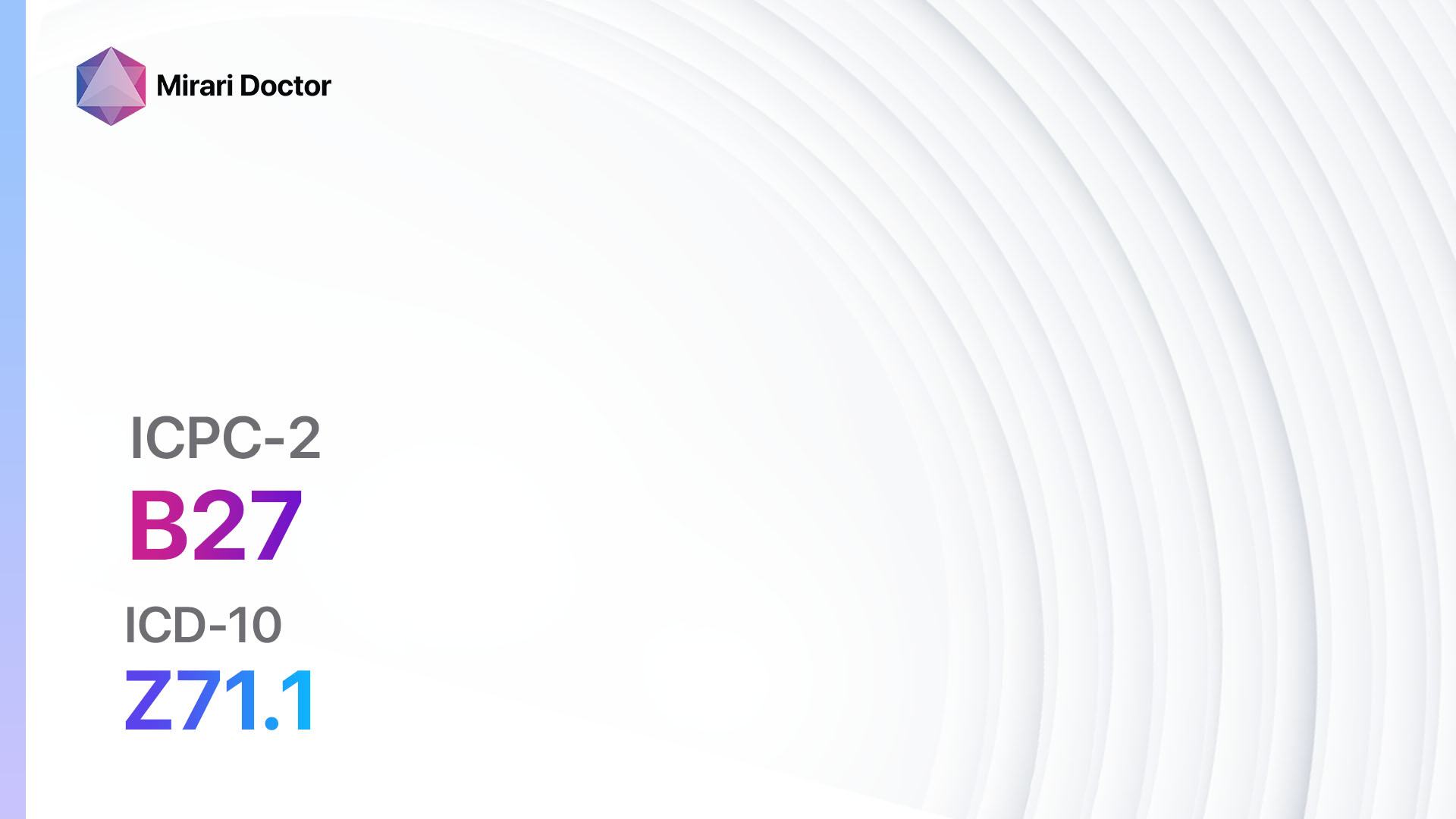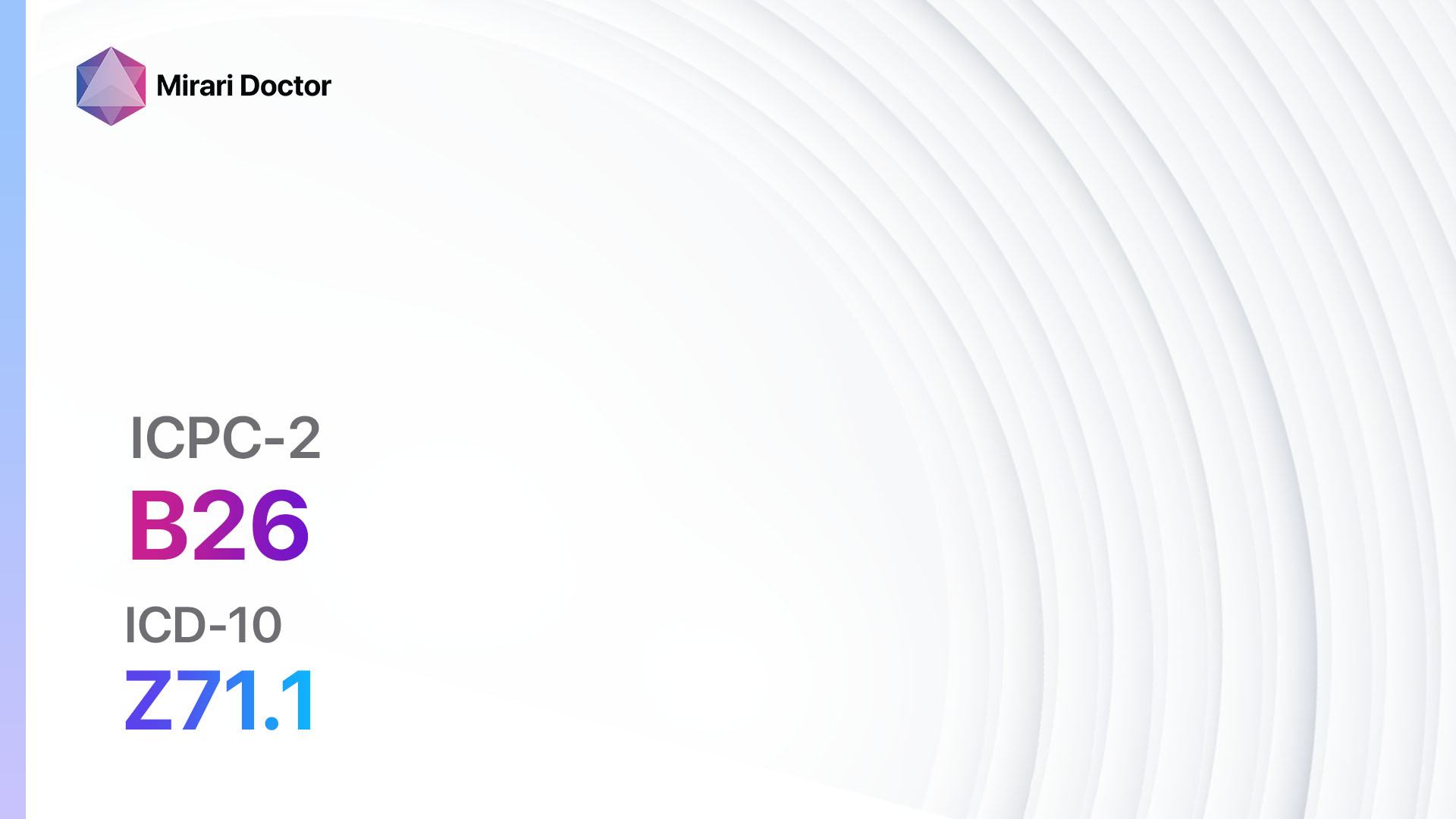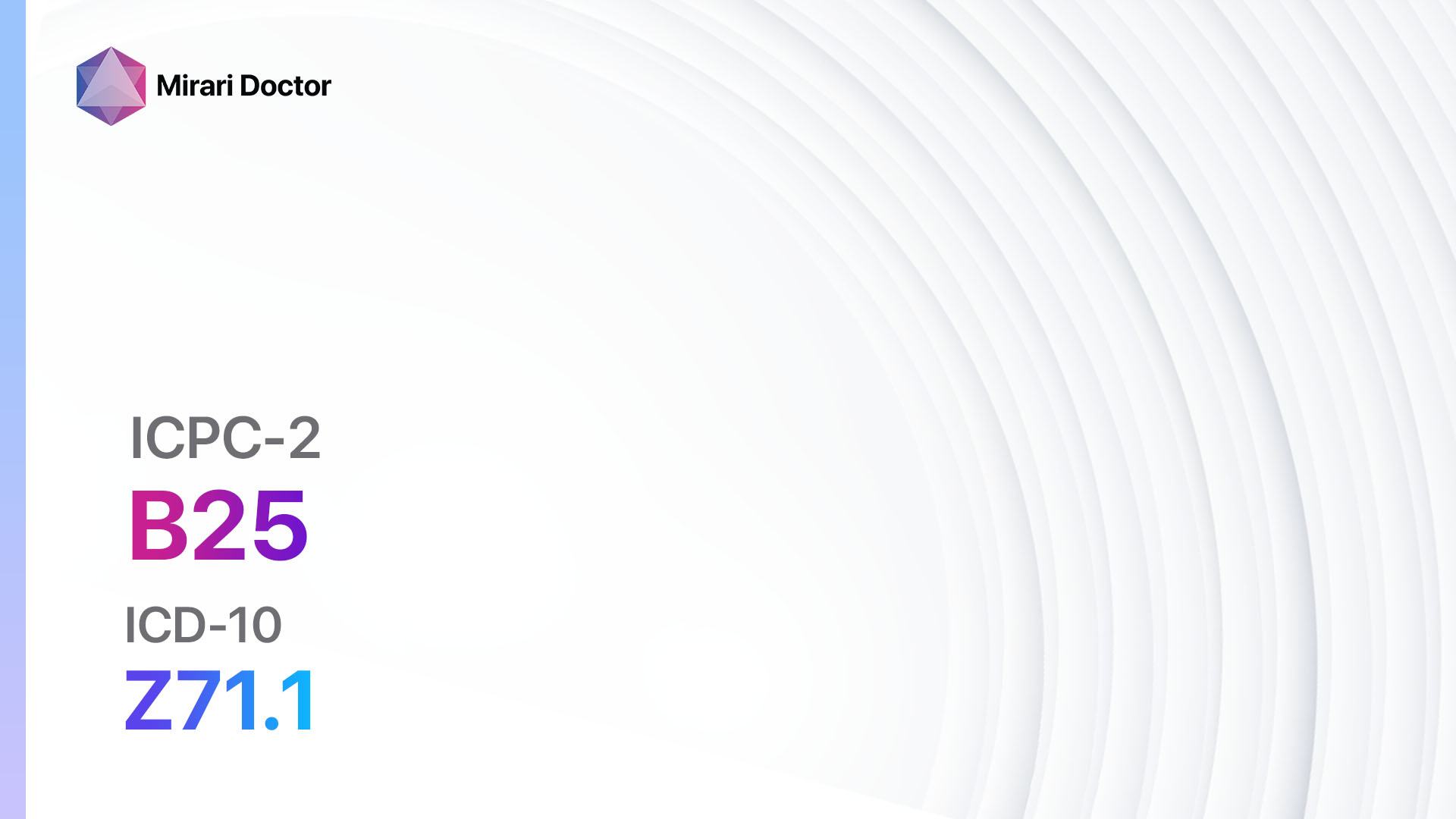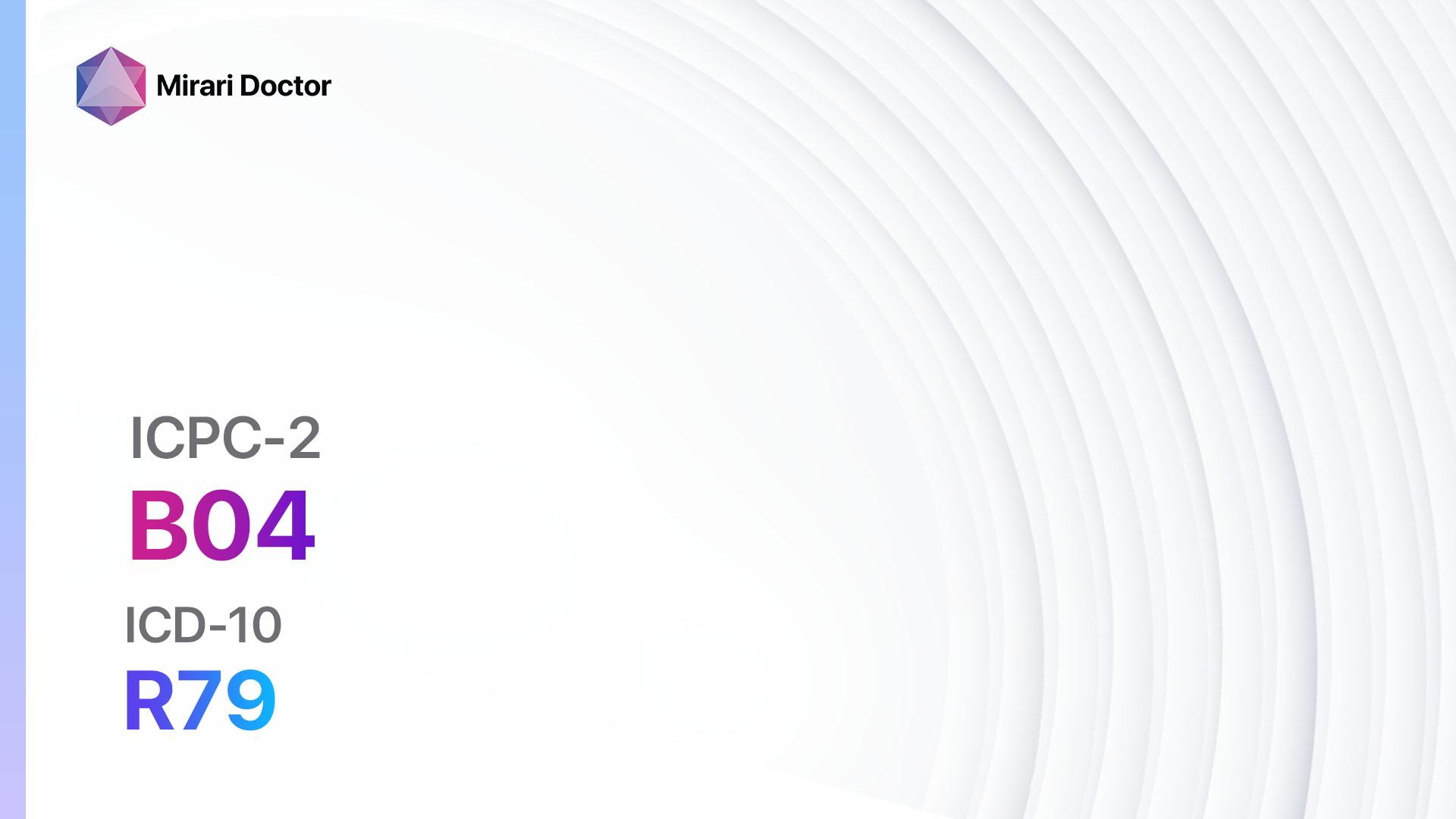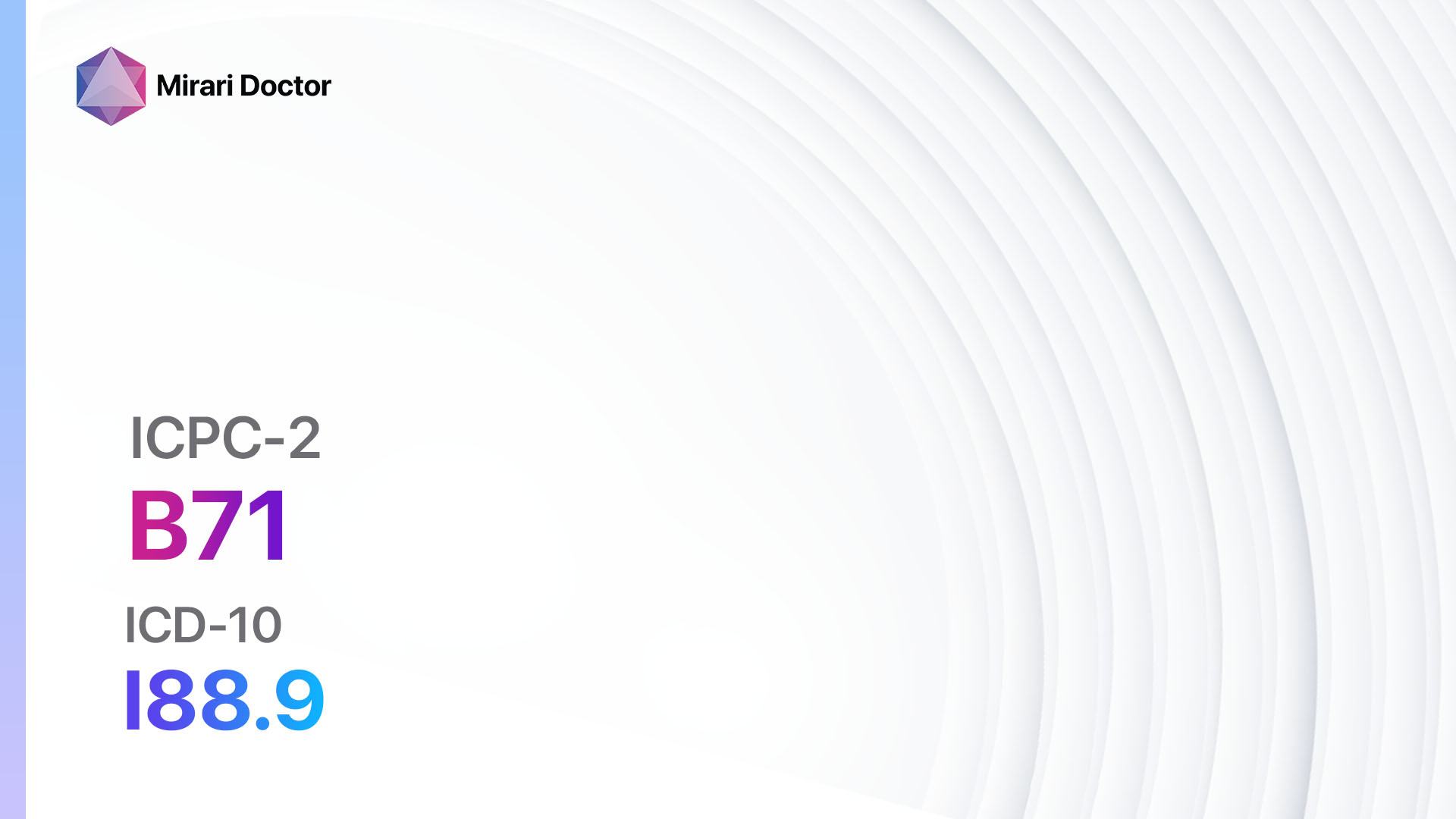
Introduction
Lymphadenitis non-specific is a condition characterized by the inflammation of lymph nodes in the body[1]. It can occur due to various causes, including infections, autoimmune disorders, and malignancies[2]. The aim of this guide is to provide a comprehensive overview of the diagnosis and management of lymphadenitis non-specific.
Codes
- ICPC-2 Code: B71 Lymphadenitis non-specific[3]
- ICD-10 Code: I88.9 Nonspecific lymphadenitis, unspecified[4]
Symptoms
- Swollen lymph nodes: The most common symptom of lymphadenitis non-specific is the enlargement of lymph nodes in the affected area. The lymph nodes may be tender to touch and may feel firm or rubbery[5].
- Redness and warmth: The skin over the affected lymph nodes may appear red and feel warm to touch[6].
- Pain or discomfort: Swollen lymph nodes can cause pain or discomfort, especially when pressure is applied to them[7].
- Fever: In some cases, lymphadenitis non-specific may be accompanied by fever and other flu-like symptoms[8].
Causes
- Infections: Lymphadenitis non-specific can be caused by bacterial, viral, or fungal infections. Common infections associated with this condition include strep throat, tuberculosis, and cat-scratch disease[9].
- Autoimmune disorders: Certain autoimmune disorders, such as lupus or rheumatoid arthritis, can lead to the inflammation of lymph nodes[10].
- Malignancies: Lymphadenitis non-specific can also be a result of cancer, particularly lymphoma or leukemia.
Diagnostic Steps
Medical History
- Gather information about the patient’s symptoms, including the duration and severity of swollen lymph nodes.
- Inquire about any recent infections or illnesses that may have triggered the lymphadenitis.
- Ask about any underlying medical conditions or autoimmune disorders that the patient may have.
Physical Examination
- Perform a thorough physical examination, paying close attention to the location, size, and tenderness of the swollen lymph nodes.
- Check for any signs of infection, such as redness, warmth, or drainage from the affected area.
- Assess the patient’s overall health and look for any other signs or symptoms that may indicate an underlying cause of the lymphadenitis.
Laboratory Tests
- Complete blood count (CBC): A CBC can help determine if there is an increase in white blood cells, which may indicate an infection or inflammation.
- Blood cultures: Blood cultures may be done to identify the presence of bacteria or other microorganisms in the bloodstream.
- Biopsy: In some cases, a biopsy of the affected lymph node may be necessary to determine the underlying cause of the lymphadenitis.
Diagnostic Imaging
- Ultrasound: An ultrasound may be performed to visualize the lymph nodes and assess their size, shape, and internal structure.
- CT scan or MRI: These imaging modalities can provide more detailed images of the lymph nodes and surrounding tissues, helping to identify any abnormalities or signs of malignancy.
Other Tests
- Fine-needle aspiration (FNA): FNA involves using a thin needle to extract a sample of cells from the swollen lymph node for further analysis.
- Culture and sensitivity testing: If an infection is suspected, a sample of fluid or tissue from the affected area may be sent to the laboratory for culture and sensitivity testing to identify the specific microorganism causing the infection and determine the most effective treatment.
Follow-up and Patient Education
- Schedule follow-up appointments to monitor the progress of treatment and ensure resolution of symptoms.
- Educate the patient about the importance of completing the full course of prescribed medications and any necessary lifestyle modifications.
- Provide information on self-care measures, such as warm compresses and over-the-counter pain relievers, to alleviate symptoms.
Possible Interventions
Traditional Interventions
Medications:
Top 5 drugs for Lymphadenitis non-specific:
- Antibiotics (e.g., Amoxicillin, Cephalexin):
- Cost: Generic versions can be $3-$50/month.
- Contraindications: Allergy to penicillin or cephalosporins.
- Side effects: Upset stomach, diarrhea, rash.
- Severe side effects: Severe allergic reactions, Clostridium difficile infection.
- Drug interactions: Warfarin, oral contraceptives.
- Warning: Complete the full course of antibiotics as prescribed.
- Nonsteroidal anti-inflammatory drugs (NSAIDs) (e.g., Ibuprofen, Naproxen):
- Cost: Generic versions can be $5-$20/month.
- Contraindications: Active peptic ulcer disease, history of gastrointestinal bleeding.
- Side effects: Upset stomach, heartburn, dizziness.
- Severe side effects: Gastrointestinal bleeding, kidney problems.
- Drug interactions: Aspirin, other NSAIDs.
- Warning: Take with food to minimize stomach upset.
- Corticosteroids (e.g., Prednisone, Dexamethasone):
- Cost: Generic versions can be $4-$30/month.
- Contraindications: Active infections, systemic fungal infections.
- Side effects: Increased appetite, weight gain, mood changes.
- Severe side effects: Increased risk of infections, osteoporosis.
- Drug interactions: Nonsteroidal anti-inflammatory drugs, anticoagulants.
- Warning: Do not stop abruptly; taper off gradually.
- Antiviral medications (e.g., Acyclovir, Valacyclovir):
- Cost: Generic versions can be $10-$50/month.
- Contraindications: Allergy to antiviral medications.
- Side effects: Nausea, headache, dizziness.
- Severe side effects: Severe allergic reactions, kidney problems.
- Drug interactions: Probenecid, other antiviral medications.
- Warning: Start treatment as early as possible for maximum effectiveness.
- Antifungal medications (e.g., Fluconazole, Itraconazole):
- Cost: Generic versions can be $10-$100/month.
- Contraindications: Allergy to antifungal medications.
- Side effects: Upset stomach, diarrhea, rash.
- Severe side effects: Liver damage, severe allergic reactions.
- Drug interactions: Warfarin, certain anticonvulsants.
- Warning: Take with food to minimize stomach upset.
Alternative Drugs:
- Homeopathic remedies: Some homeopathic remedies, such as Belladonna or Mercurius solubilis, may be used to alleviate symptoms of lymphadenitis. Cost: Varies depending on the specific remedy.
- Herbal supplements: Certain herbal supplements, such as Echinacea or Goldenseal, may have immune-boosting properties that can aid in the treatment of lymphadenitis. Cost: Varies depending on the specific supplement.
Surgical Procedures
- Abscess drainage: If an abscess is present, it may need to be drained surgically to remove the pus and alleviate symptoms. Cost: $500-$2,000.
- Lymph node biopsy: In cases where the underlying cause of lymphadenitis is unclear, a lymph node biopsy may be performed to obtain a tissue sample for further analysis. Cost: $1,000-$5,000.
Alternative Interventions
- Warm compresses: Applying warm compresses to the affected area can help reduce inflammation and alleviate pain. Cost: Minimal.
- Herbal poultices: Certain herbs, such as calendula or chamomile, can be used to create poultices that can be applied to the swollen lymph nodes to reduce inflammation. Cost: Varies depending on the herbs used.
- Homeopathic remedies: Homeopathic remedies, such as Calcarea sulphurica or Silicea, may be used to promote drainage and reduce swelling of the lymph nodes. Cost: Varies depending on the specific remedy.
- Acupuncture: Acupuncture may help stimulate the body’s natural healing processes and reduce inflammation. Cost: $60-$120 per session.
- Massage therapy: Gentle massage techniques can help improve lymphatic circulation and reduce swelling. Cost: $60-$120 per session.
Lifestyle Interventions
- Rest and relaxation: Adequate rest and relaxation can support the body’s immune system and promote healing. Cost: Minimal.
- Healthy diet: A balanced diet rich in fruits, vegetables, and lean proteins can provide essential nutrients for immune function. Cost: Varies depending on individual food choices.
- Hydration: Drinking plenty of water can help flush out toxins and support lymphatic function. Cost: Minimal.
- Stress management: Techniques such as deep breathing, meditation, or mindfulness can help reduce stress and support immune function. Cost: Varies depending on the specific practice.
- Exercise: Regular physical activity can help improve circulation and strengthen the immune system. Cost: Varies depending on individual preferences and access to exercise facilities.
It is important to note that the cost ranges provided are approximate and may vary depending on the location and availability of the interventions.
Mirari Cold Plasma Alternative Intervention
Understanding Mirari Cold Plasma
- Safe and Non-Invasive Treatment: Mirari Cold Plasma is a safe and non-invasive treatment option for various skin conditions. It does not require incisions, minimizing the risk of scarring, bleeding, or tissue damage.
- Efficient Extraction of Foreign Bodies: Mirari Cold Plasma facilitates the removal of foreign bodies from the skin by degrading and dissociating organic matter, allowing easier access and extraction.
- Pain Reduction and Comfort: Mirari Cold Plasma has a local analgesic effect, providing pain relief during the treatment, making it more comfortable for the patient.
- Reduced Risk of Infection: Mirari Cold Plasma has antimicrobial properties, effectively killing bacteria and reducing the risk of infection.
- Accelerated Healing and Minimal Scarring: Mirari Cold Plasma stimulates wound healing and tissue regeneration, reducing healing time and minimizing the formation of scars.
Mirari Cold Plasma Prescription
Video instructions for using Mirari Cold Plasma Device – B71 Lymphadenitis non-specific (ICD-10:I88.9)
| Mild | Moderate | Severe |
| Mode setting: 1 (Infection) Location: 0 (Localized) Morning: 15 minutes, Evening: 15 minutes |
Mode setting: 1 (Infection) Location: 0 (Localized) Morning: 30 minutes, Lunch: 30 minutes, Evening: 30 minutes |
Mode setting: 1 (Infection) Location: 0 (Localized) Morning: 30 minutes, Lunch: 30 minutes, Evening: 30 minutes |
| Mode setting: 2 (Wound Healing) Location: 0 (Localized) Morning: 15 minutes, Evening: 15 minutes |
Mode setting: 2 (Wound Healing) Location: 0 (Localized) Morning: 30 minutes, Lunch: 30 minutes, Evening: 30 minutes |
Mode setting: 2 (Wound Healing) Location: 0 (Localized) Morning: 30 minutes, Lunch: 30 minutes, Evening: 30 minutes |
| Mode setting: 3 (Antiviral Therapy) Location: 0 (Localized) Morning: 15 minutes, Evening: 15 minutes |
Mode setting: 3 (Antiviral Therapy) Location: 0 (Localized) Morning: 30 minutes, Lunch: 30 minutes, Evening: 30 minutes |
Mode setting: 3 (Antiviral Therapy) Location: 0 (Localized) Morning: 30 minutes, Lunch: 30 minutes, Evening: 30 minutes |
| Mode setting: 7 (Immunotherapy) Location: 1 (Sacrum) Morning: 15 minutes, Evening: 15 minutes |
Mode setting: 7 (Immunotherapy) Location: 1 (Sacrum) Morning: 30 minutes, Lunch: 30 minutes, Evening: 30 minutes |
Mode setting: 7 (Immunotherapy) Location: 1 (Sacrum) Morning: 30 minutes, Lunch: 30 minutes, Evening: 30 minutes |
| Total Morning: 60 minutes approx. $10 USD, Evening: 60 minutes approx. $10 USD |
Total Morning: 120 minutes approx. $20 USD, Lunch: 120 minutes approx. $20 USD, Evening: 120 minutes approx. $20 USD, |
Total Morning: 120 minutes approx. $20 USD, Lunch: 120 minutes approx. $20 USD, Evening: 120 minutes approx. $20 USD, |
| Usual treatment for 7-60 days approx. $140 USD – $1200 USD | Usual treatment for 6-8 weeks approx. $2,520 USD – $3,360 USD |
Usual treatment for 3-6 months approx. $5,400 USD – $10,800 USD
|
 |
|
Use the Mirari Cold Plasma device to treat Lymphadenitis non-specific effectively.
WARNING: MIRARI COLD PLASMA IS DESIGNED FOR THE HUMAN BODY WITHOUT ANY ARTIFICIAL OR THIRD PARTY PRODUCTS. USE OF OTHER PRODUCTS IN COMBINATION WITH MIRARI COLD PLASMA MAY CAUSE UNPREDICTABLE EFFECTS, HARM OR INJURY. PLEASE CONSULT A MEDICAL PROFESSIONAL BEFORE COMBINING ANY OTHER PRODUCTS WITH USE OF MIRARI.
Step 1: Cleanse the Skin
- Start by cleaning the affected area of the skin with a gentle cleanser or mild soap and water. Gently pat the area dry with a clean towel.
Step 2: Prepare the Mirari Cold Plasma device
- Ensure that the Mirari Cold Plasma device is fully charged or has fresh batteries as per the manufacturer’s instructions. Make sure the device is clean and in good working condition.
- Switch on the Mirari device using the power button or by following the specific instructions provided with the device.
- Some Mirari devices may have adjustable settings for intensity or treatment duration. Follow the manufacturer’s instructions to select the appropriate settings based on your needs and the recommended guidelines.
Step 3: Apply the Device
- Place the Mirari device in direct contact with the affected area of the skin. Gently glide or hold the device over the skin surface, ensuring even coverage of the area experiencing.
- Slowly move the Mirari device in a circular motion or follow a specific pattern as indicated in the user manual. This helps ensure thorough treatment coverage.
Step 4: Monitor and Assess:
- Keep track of your progress and evaluate the effectiveness of the Mirari device in managing your Lymphadenitis non-specific. If you have any concerns or notice any adverse reactions, consult with your health care professional.
Note
This guide is for informational purposes only and should not replace the advice of a medical professional. Always consult with your healthcare provider or a qualified medical professional for personal advice, diagnosis, or treatment. Do not solely rely on the information presented here for decisions about your health. Use of this information is at your own risk. The authors of this guide, nor any associated entities or platforms, are not responsible for any potential adverse effects or outcomes based on the content.
Mirari Cold Plasma System Disclaimer
- Purpose: The Mirari Cold Plasma System is a Class 2 medical device designed for use by trained healthcare professionals. It is registered for use in Thailand and Vietnam. It is not intended for use outside of these locations.
- Informational Use: The content and information provided with the device are for educational and informational purposes only. They are not a substitute for professional medical advice or care.
- Variable Outcomes: While the device is approved for specific uses, individual outcomes can differ. We do not assert or guarantee specific medical outcomes.
- Consultation: Prior to utilizing the device or making decisions based on its content, it is essential to consult with a Certified Mirari Tele-Therapist and your medical healthcare provider regarding specific protocols.
- Liability: By using this device, users are acknowledging and accepting all potential risks. Neither the manufacturer nor the distributor will be held accountable for any adverse reactions, injuries, or damages stemming from its use.
- Geographical Availability: This device has received approval for designated purposes by the Thai and Vietnam FDA. As of now, outside of Thailand and Vietnam, the Mirari Cold Plasma System is not available for purchase or use.
References
- Pecora, F., Abate, L., Scavone, S., Pertucci, I., Costa, F., & Argentiero, A. (2021). Management of Infectious Lymphadenitis in Children. Pediatric Reports, 13(3), 451-464. https://doi.org/10.3390/pediatric13030052
- Zimmermann, P., Curtis, N., & Pollard, A. J. (2020). Lymphadenitis and lymphadenopathy in children. Pediatrics and Child Health, 30(2), 54-59. https://doi.org/10.1016/j.paed.2019.11.002
- WONCA International Classification Committee. (2005). ICPC-2-R: International Classification of Primary Care (2nd ed., revised). Oxford University Press.
- World Health Organization. (2019). International Statistical Classification of Diseases and Related Health Problems (11th ed.). https://icd.who.int/
- Mohseni, S., Shojaiefard, A., Khorgami, Z., Alinejad, S., Ghorbani, A., & Ghafouri, A. (2014). Peripheral lymphadenopathy: Approach and diagnostic tools. Iranian Journal of Medical Sciences, 39(2 Suppl), 158-170.
- Gaddey, H. L., & Riegel, A. M. (2016). Unexplained Lymphadenopathy: Evaluation and Differential Diagnosis. American Family Physician, 94(11), 896-903.
- Nield, L. S., & Kamat, D. (2004). Lymphadenopathy in children: When and how to evaluate. Clinical Pediatrics, 43(1), 25-33. https://doi.org/10.1177/000992280404300104
- Leung, A. K., Robson, W. L., & Tse, L. Y. (2006). Evaluation of lymphadenopathy in children. Advances in Pediatrics, 53, 277-292. https://doi.org/10.1016/j.yapd.2006.04.005
- Peters, T. R., & Edwards, K. M. (2000). Cervical lymphadenopathy and adenitis. Pediatrics in Review, 21(12), 399-405. https://doi.org/10.1542/pir.21-12-399
- Sahai, S. (2013). Lymphadenopathy. In A. Sahni & A. Aggarwal (Eds.), Pediatric Rheumatology (pp. 39-47). Jaypee Brothers Medical Publishers (P) Ltd. https://doi.org/10.5005/jp/books/11948_5
Related articles
Made in USA


